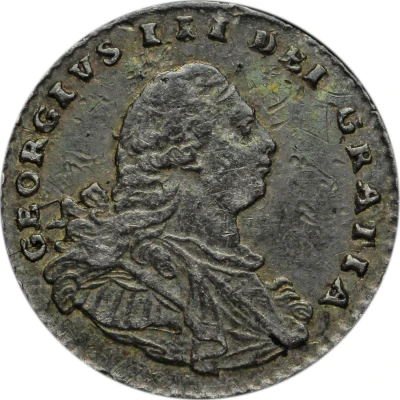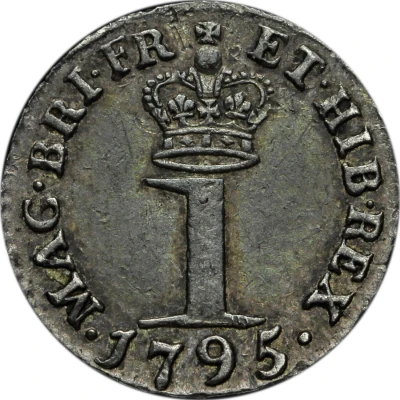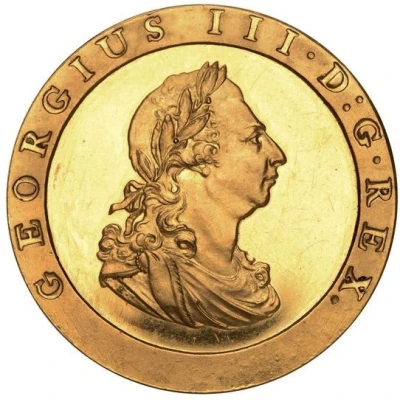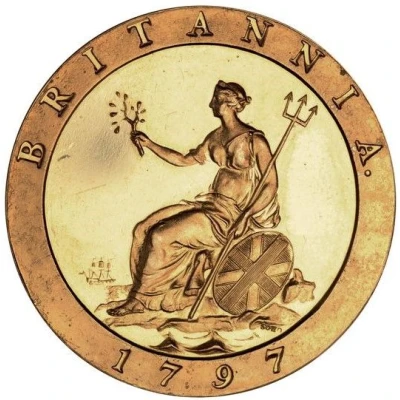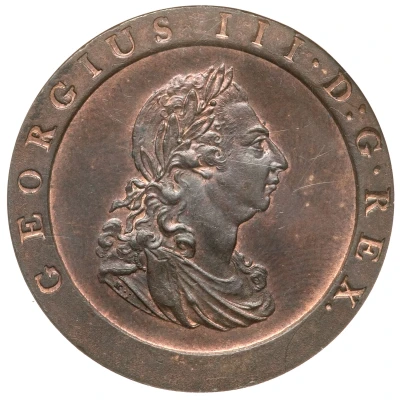
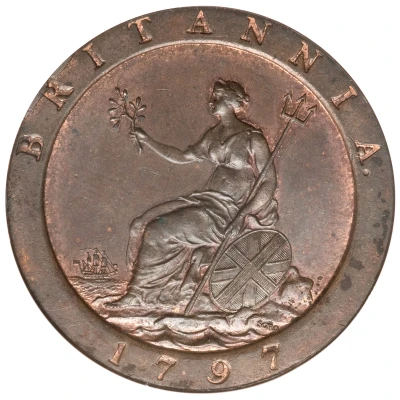

1 Penny - George III 2nd Issue; 'Cartwheel'
1797 year| Copper | 28.35 g | 36 mm |
| Issuer | United Kingdom (United Kingdom, British Overseas Territories and Crown Dependencies) and Australia |
|---|---|
| King | George III (1760-1820) |
| Type | Standard circulation coin |
| Year | 1797 |
| Value | 1 Penny (1⁄240) |
| Currency | Pound sterling (1158-1970) |
| Composition | Copper |
| Weight | 28.35 g |
| Diameter | 36 mm |
| Thickness | 3 mm |
| Shape | Round |
| Technique | Milled |
| Orientation | Coin alignment ↑↓ |
| Demonetized | 31 August 1971 |
| Updated | 2024-10-08 |
| Numista | N#947 |
|---|---|
| Rarity index | 8% |
Reverse
Seated figure of Britannia left, with trident and shield in left hand, olive branch in raised right hand, shield bearing Union flag resting on left, sea behind with ship on left, mint name below shield, legend above and date below on raised rim.
Script: Latin
Lettering:
BRITANNIA
SOHO
1797
Engraver: Conrad Heinrich Küchler
Edge
Plain
Comment
The first base metal regal pennies to circulate in Britain, these pieces were produced by Matthew Boulton using a steam powered press at the Soho Mint in Birmingham beginning in 1797.
From 1770 until the end of the 18th century the practice of melting down the official copper coins and making lightweight forgeries had become so widespread that it prompted industrialist Matthew Boulton to offer a potential solution. He proposed that each coin should actually be made to contain its value in copper (one ounce avoirdupois), that the quality should be improved by using a retaining collar during striking (to give a perfectly round coin) and by designing the coins with thick raised borders to prevent them wearing so easily.
This type is one of the 1800 Australian Proclamation coins. In 1800 the then-Governor of New South Wales, Philip Gidley King issued a proclamation that ten specific British, Netherlands, Indian, Portuguese and Spanish coins were to be brought into the colony and given inflated denominations than what was indicated on the coins so that they would say in circulation in the colony. This Penny had a value of 2 Pence.
This type was struck in copper by Boulton for several years after 1797 with no change in date, along with some later strikes in a variety of metals. Further restrikes were produced by W.J. Taylor when he bought the dies in 1848; the chief way these later issues can be distinguished is by marks resulting from die corrosion.
Interesting fact
One interesting fact about the 1797 George III Cartwheel Penny is that it was the first coin to feature a portrait of a British monarch facing left, which was a departure from the traditional right-facing portraits seen on previous coins. This design change was made to distinguish the new coinage from earlier issues and to symbolize a break with the past.
Price
| Date | Mintage | VG | F | VF | XF | AU | UNC |
|---|---|---|---|---|---|---|---|
| 1797 | 8601600 | - | - | - | - | - | - |
Values in the table are based on evaluations by sales realized on Internet platforms. They serve as an indication only for 1 Penny - George III (2nd Issue; 'Cartwheel') 1797 coin.
